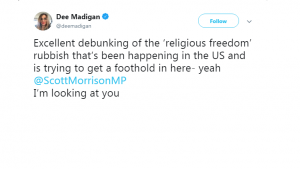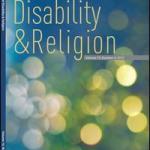 In Australia at the moment we are having big discussions about religious freedom and whether our religious freedom laws need to be updated. Some folks are dismissing or attacking the idea on the grounds that we already have religious freedom and religious freedom is nothing more than a right to discriminate anyway, so the less of it the better. I’ve already written an article on this over at Public Discourse and now have another one over at ABC Religion and Ethics.
In Australia at the moment we are having big discussions about religious freedom and whether our religious freedom laws need to be updated. Some folks are dismissing or attacking the idea on the grounds that we already have religious freedom and religious freedom is nothing more than a right to discriminate anyway, so the less of it the better. I’ve already written an article on this over at Public Discourse and now have another one over at ABC Religion and Ethics.
I argue, first, that there are limitations to religious freedom, however, there are also limitations to the limitation of religious freedom. Compromises to religious freedom inevitably compromise cognate rights such as freedom of conscience, speech, and association.
Religious freedom needs to be construed in light of Australia’s constitutional protections to religious freedom, our cultural pluralism, historical relationships between government and religious bodies, a commitment to political secularism and in the light of contemporary challenges such as Islamophobia, rather than be viewed simply through the lens of conflict with LGBTIQ rights.
I argue, second, that critics of bolstering laws fail to mention the Universal Declaration of Human Rights (UDHR) and the International Covenant on Civil and Political Rights (ICCPR) and how they define religious freedom.
In other words, religious freedom is not just something that exists between one’s ears, behind a pulpit, or in a few pamphlets that a religious organization produces. Religious freedom pertains to private and public manifestations, in community and in education. This isn’t the view of the much maligned “religious right”; it is the position of the United Nations. And yet no legislative body in Australia has such enshrined such international protections in either federal or state law.











